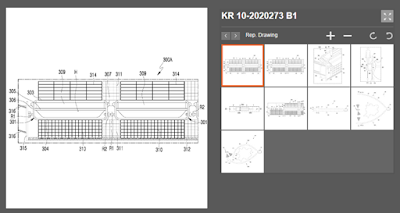Plastics
that can be easily found in everyday life, and most of the household goods we
commonly use are made of plastic. However, plastics that are discarded
inadvertently can only cause environmental pollution. What serious problems can
small plastics make?
The
severity of micro plastics.
l Small
plastic? Micro plastic!
 |
| 🔺 pixabay.com |
Micro
Plastics is a major cause of problems in the coastal environment as large
plastics break down into smaller pieces and float in the ocean and sea levels.
According to the US Oceanic and Atmospheric Administration, the size of micro
plastics refers to all plastics as small as 5mm microscopically. The National
Territory Environment Information Center divides micro plastics into two stages
and explains the process of 'how did plastics come to the sea level?' First of
all, plastic particles in daily life products such as toiletries, body wash,
toothpaste, etc., enter the sewage treatment plant without being filtered, and
this is called the primary micro plastic. In addition, plastics that are
discarded in rivers and seas are worn out by ultraviolet rays, waves, ocean
currents, etc. and thus fragmented plastic is defined as secondary micro
plastics. It floats to the sea and floats at the sea level without being
decomposed, absorbs harmful chemicals, and turns into highly concentrated toxic
substances.
l How much
serious are micro plastics?
 |
| 🔺 pixabay.com |
Shall
we take a deeper look at the later process of micro plastics turned into toxic
substances? Plastics turned into toxic substances are eaten with plankton
misunderstood as food, and small fish eat plankton exposed to plastics, and
toxic substances are accumulated in the fish. When larger fish eat smaller
fish, the food supply chain becomes polluted, and plastic eventually enters our
body, contaminating the environment and harming our health.
In
addition, micro plastics contaminate beaches and salt fields. Micro plastics
are detected in salt obtained by evaporation of seawater exposed to micro
plastics, penetrates into the inside of the beach, does not rot, lasts for a
long time, and threatens the natural ecosystem like a time bomb.
l What is
the use of plastics?
 |
| 🔺 pixabay.com |
Plastic
has changed our daily lives. It is not simply used for packaging materials for
daily necessities, but is used in various places such as automobiles,
electronic products, fashion, and sculptures by transforming a part of plastic.
But the earth is ruined by excessive use of plastic. According to the Korea
Environmental Industry & Technology Institute's “Current Status and
Solutions for Plastic Problems at Home and Abroad”, the world's 65 years of
plastic production amounted to 8,300 million tons, and the amount of plastic
waste was estimated to be 6,300 million tons. Plastic waste accounts for a high
proportion of packaging materials> textiles> construction waste.
According
to the Resource Recycling Information System, as for the status of generation
and treatment of designated wastes (as of 2018), waste synthetic resins
(20,617.7 tons), waste (tn synthetic rubbers (529 tons)), and waste organic
solvents (1.181,055 tons)). It can be seen that a huge amount of waste plastic
has been discarded, but it is unsafe because it cannot accurately determine the
amount of illegal and unauthorized dumping other than statistical figures.
What
are the patents that can block micro plastics?
n Cleaning
cars that sort out micro plastics
 |
🔺 wipsglobal.com
(KR 10-2148787) |
The
Korea Institute of Ocean Science & Technology has a patent titled “Apparatus
for selecting and collecting micro plastics and costal cleaning car including
the same”, which is 10-2148787. This cleaning car helps to sort out garbage and
micro plastics from the sand on the shore. It is a cleaning car that is able to
collect through a protruded separate tool and a conveyor belt inside.
n Monitoring
system to analyze water quality
 |
🔺 wipsglobal.com
(KR 10-2135690) |
KR
patent, 10-2135690 titled “Waste water quality monitoring system including
water treatment RTU with fine plastic detection”. It analyzes the harmful
environment and micro plastics around the outlet. This patent is a monitoring
system that can determine whether there is environmental pollution by
systematically analyzing water quality by being divided into an automatic water
collection unit, a micro plastic detection unit, and an harmful environment
detection unit.
n Blocking
micro plastic movement
 |
🔺 wipsglobal.com
(KR 10-2020273) |
KR
patent, 10-2020273 titled “Ocean micro plastics and floating pollutant mass
collection”, which is a system that captures micro plastics and pollutants
floating on the sea surface. By blocking the movement of the floating material
by the blocking unit, it is possible to quickly collect a large amount of
floating material on the sea surface. In addition, since the fence prevents the
fall of the worker moving from the upper surface of the buoyancy material, rapid
maintenance is possible without a separate ship.
 |
| 🔺 pixabay.com |
In
order to reduce environmental pollution caused by plastics, it is necessary to
be aware of the environment, and the government, business, and citizens need to
work together to think and act together. We hope that all of us will be aware
of and reduce the seriousness of micro plastics with our active participation
and ingenious patents.
-----------------------------------------------------------------------------------------------------------------------------
<source>
This content is excerpted from the Korean Intellectual Property Office blog, https://blog.naver.com/kipoworld2/222134395223
































